I've compiled a list of my top ten must have flies for Colorado that I both guide and fish with a ton of confidence. This list is not color or size specific, but the photo's of the patterns shown are what I prefer when using these flies. We'll start with number ten and work our way up the list, examining why I prefer each pattern, and what times of the year they are most effective.
Number ten is the perfect example of why people shouldn't sleep on the classics. There's only one other dry fly pattern that I've landed more fish with, and that pattern graces number one on the list. The Elk Hair Caddis in sizes 14-18 is a must have dry fly for Colorado. Anywhere there are caddis hatching in the spring and fall, it's a safe bet that you can catch fish with some flavor of the Elk Hair.
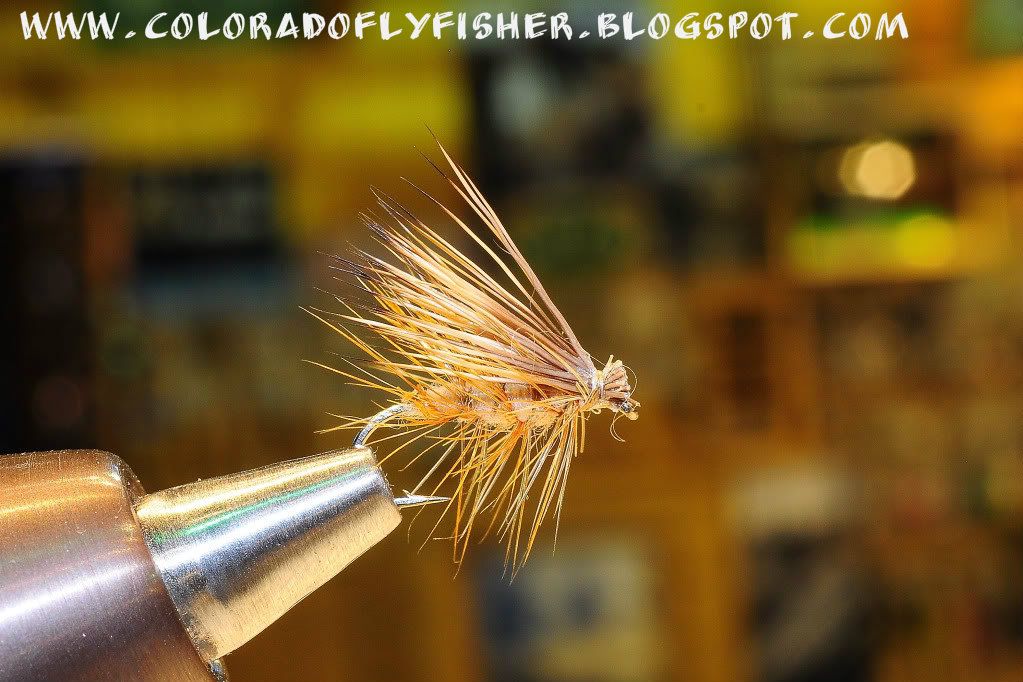 |
| #10 Elk Hair Caddis |
The best times of year to use this pattern are from the beginning of April through the end of June, and again starting around August through October. Size 18 in the color tan is what I prefer to use to imitate most adult caddis. It might surprise some anglers that caddis aren't limited to small streams and rivers, and that they live in lakes and reservoirs as well. In fact, the Elk Hair is a go to fly pattern for many stillwater fly-fishers. Try one in a larger size when you see fish on the surface at your favorite lake.
The hollow elk hair used for the wing, and the hackle feather the fly is wrapped with, give it great air trapping qualities. The Elk Hair Caddis rides high on the water's surface and floats well without a lot of special treatments such as gink, or other silicone based floatants. It's hard to beat true originals so be sure to save an entire side of your dry fly box dedicated to the Elk Hair Caddis, and you'll be well on your way to consistently catching fish on top.
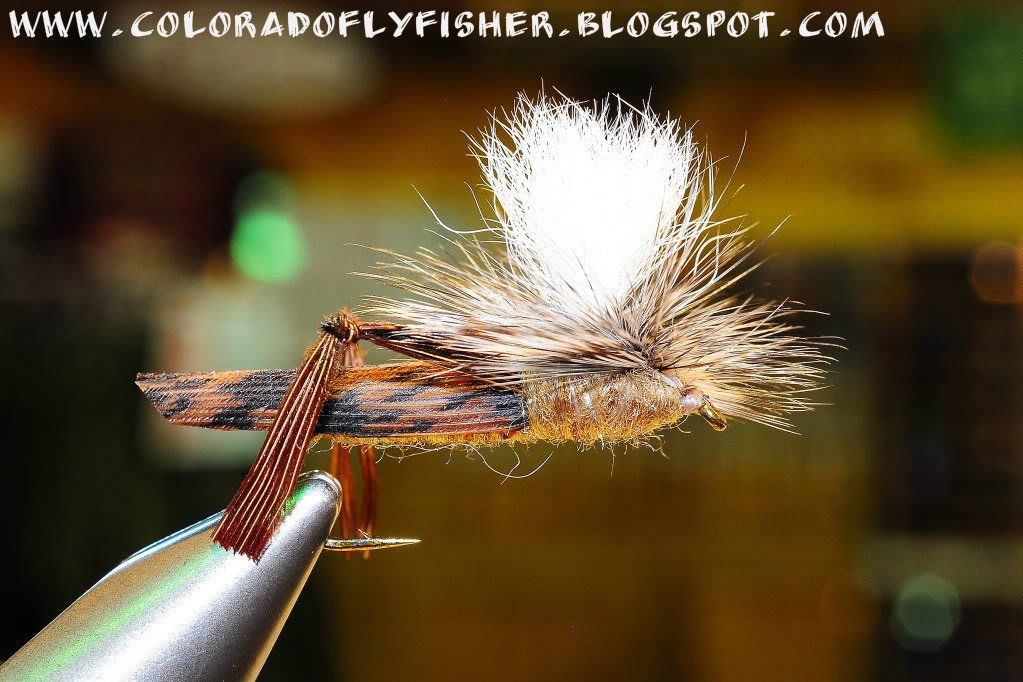 |
| #9 The Parachute Hopper |
The top ten flies on anyone's Colorado list should always include a hopper. Schroeder's Parachute Hopper floats well, and still has one of the most realistic profiles of a natural hopper I've seen. It does start to get soggy and sink a little after catching a few fish, but that problem is easily solved with some floatant. Also, the wing on this hopper gets beat up pretty easy, which depending on who you talk to, is a good or bad thing. These are small prices to pay for a near perfect representation of a grasshopper.
The best time of year to fish hoppers is in late summer starting around the end of July, and lasting through the end of Sept. When real hoppers hit the water they sit low in the surface film because they are heavy and clumsy, which is why I prefer the parachute style. Just like the Elk Hair Caddis, this is a great small stream fly. Throw delicate presentations out the window when fishing with hoppers. Deliberately cast this fly so that it hits the water hard, and makes a lot of noise. Fish tight up against the bank and close to cover.
Many anglers have replaced strike indicators when nymph fishing with hopper patterns by attaching a length of tippet to the bend of the hook of the hopper, and at the other end of the tippet, attaching a weighted nymph. This set up is called the hopper/dropper rig, and is extremely effective because you're covering more than one base with your flies (dry flies, and subsurface nymphs).
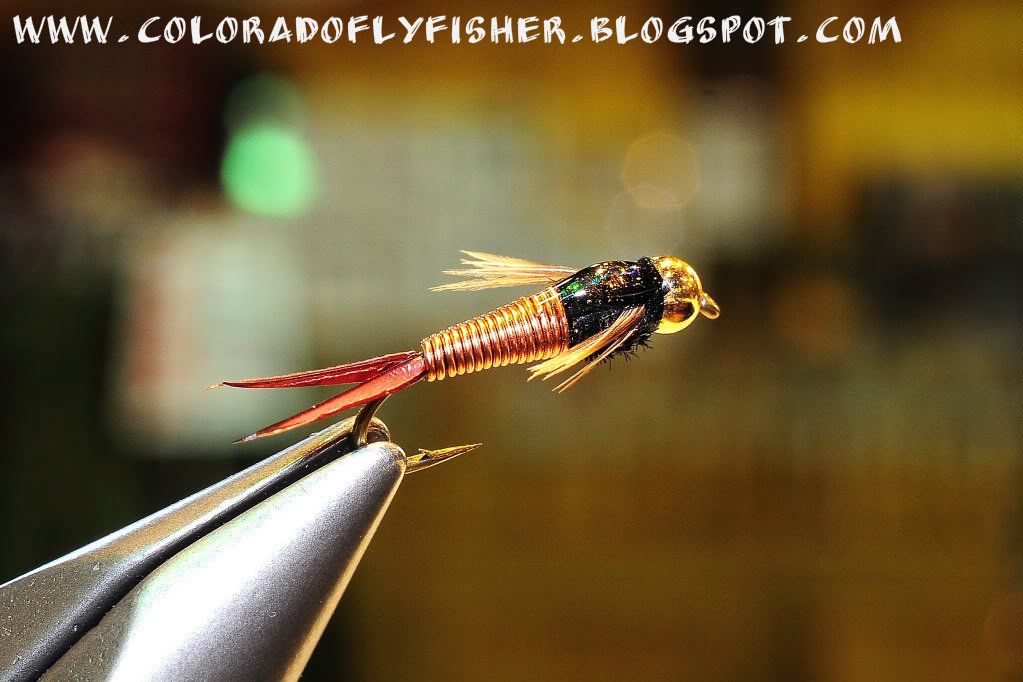 |
| #8 The Copper John |
The Copper John is the number one selling fly in America! It was created by Colorado tyer John Barr. Made with wire, and a brass or tungsten bead, this pattern is designed to get down to the fish quick. The Copper John is what many might call a "generic" pattern. Being generic isn't a bad thing. All that means in the flyfishing and tying world is that you can imitate many different bugs with this one fly.
In fact, what I love most about the Copper John is that, depending on what color and size you tie it in, you could imitate a mayfly nymph, a stonefly nymph, a caddis larvae, or even a Caddis pupae (emerging caddis). Red Copper John's sizes 18-20 are one of my favorite attractor patterns in the spring and fall when trout spawn and are being aggressive. This nymph pattern can be fished in every form of water for every fish species that we have in our beautiful state, and is a great fly to hang under a hopper. If you have a good portion of your fly box dedicated to Copper Johns you're well on your way to consistently catching fish below the surface.
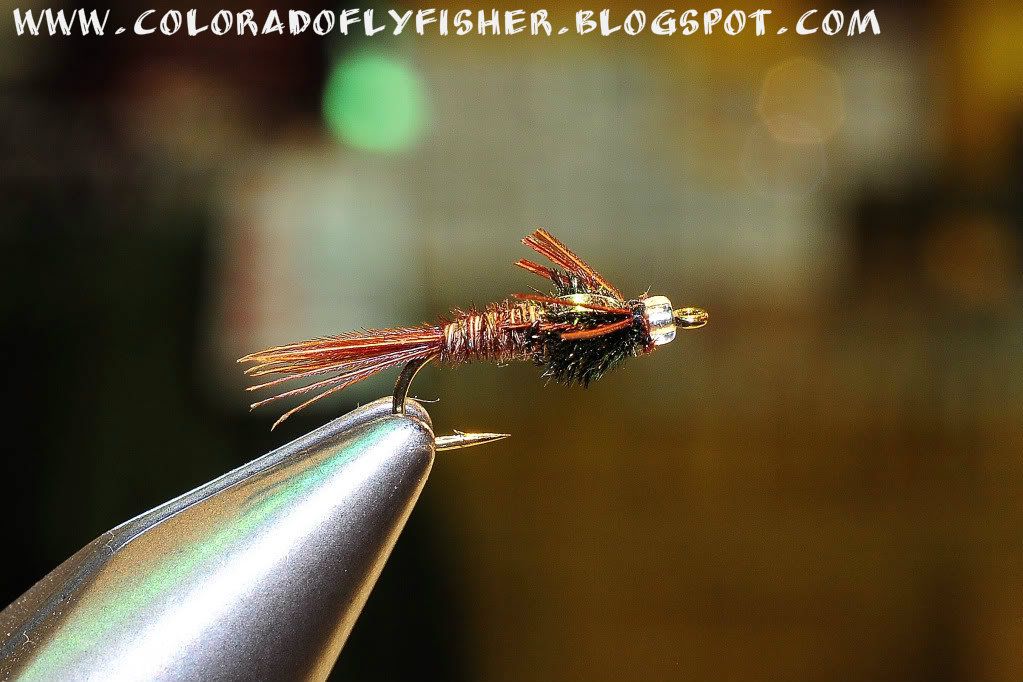 |
| #7 The Pheasant Tail Nymph |
This Pheasant Tail (P.T.) is another one that you can tie or purchase with a heavy tungsten bead, and fish beneath a hopper or Elk Hair Caddis as part of the "hopper/dropper" system. A size 18 Pheasant Tail is a near perfect representation of the Pale Morning Dun Mayfly nymph, which can be found in many of Colorado's rivers and small streams from July to the end of August. Carry them in a size 16-18 to imitate PMDs. My main reason for putting this fly above the Copper John on the list is simply because I've landed more fish with it. This entire list is biased, and based off of my personal experience!
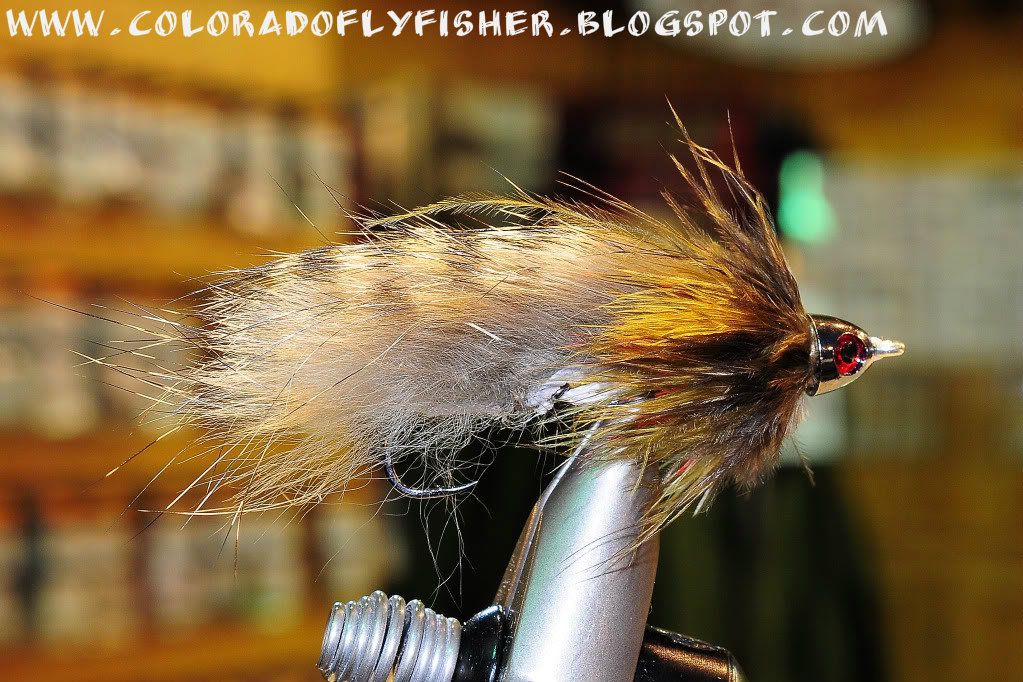 |
| #6 The Sculpzilla |
My streamer of choice is the Sculpzilla. The sculpin is a small fish that has 11 different families, and can be found in many of our bodies of water. The sculpins that I've seen in Colorado, and the one's most imitated by fly tiers, are olive in color. They have big heads similar to a catfish -without the whiskers- and large dorsal and pectoral fins. Though they're a forage fish for trout and many other sport fish found in Colorado, it's a rare occurrence to see a sculpin. I don't know if it's because they mostly stick to the bottom of lakes and rivers, or if they only exist in small numbers.
The fact that Sculpins can be found in Colorado is not why I love this pattern. The massive bead head gives this streamer enough weight to get down through the water column quickly without needing a sink tip line, or additional weight added to your leader. What makes it even more affective is the stinger hook in the back. Many streamers only have one hook, and 99 percent of the time that hook is located way up front on the fly. More often than not, when a fish strikes a streamer it is attacking the fly from behind, which means that you get a lot of short strikes. A short strike is when a fish is chasing your streamer, and hits the fly on the tail, often just short of making contact with the hook.
Tyers got smart and started tying articulated patterns with hooks in the tail. The realistic shape, weight, and the stinger hook, all culminate into what's by far my favorite streamer on the market. Olive (as pictured) is my favorite color to use, and has been a lip ripper for me since I started using them a few years ago.
 |
| #5 The Barr's Emerger |
The Barr's emerger is another great John Barr pattern that I have a ton of confidence in. A mayfly spends most of it's life under water as a nymph. It's only when the temps and conditions are just right that these insects emerge off the bottom, and break free from their nymphal shuck. This process is similar to when a snake sheds it's skin. Under that nymph exoskeleton is the adult dun mayfly.
The emergence is when these insects are most vulnerable. This is because they're using trapped air bubbles to carry them off the bottom and up through the water column. Being pushed by the current, and completely exposed, this is when they are an easy meal for a hungry trout. There are 3 major mayfly hatches that John Barr ties his emergers for, and all three are important for Colorado. The Pale Morning Dun Emerger (as pictured), the Blue Wing Olive Emerger, and the Trico Emerger are all available in appropriate sizes. The Barr's Emerger is number 5 on my list, because during spring and fall, the Blue Winged Olive variation of this fly has fooled many of my largest trout.
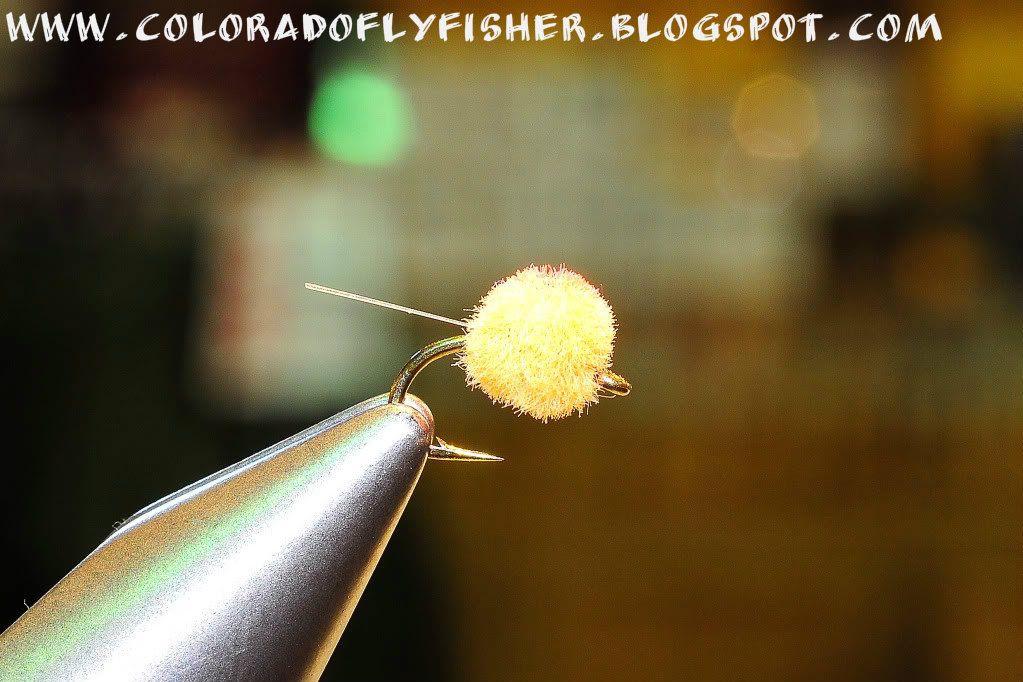 |
| #4 The Glow Bug Egg |
It's important to watch how the fish react to the egg during those moments of clarity when you can see it under the surface. Sometimes egg patterns can actually put fish down, even if you think the conditions, and time of year are right to use them. If you fish an egg in faster water that you know is holding fish, and you don't get a strike within the first ten drifts, switch flies because you could be attracting the wrong kind of attention.
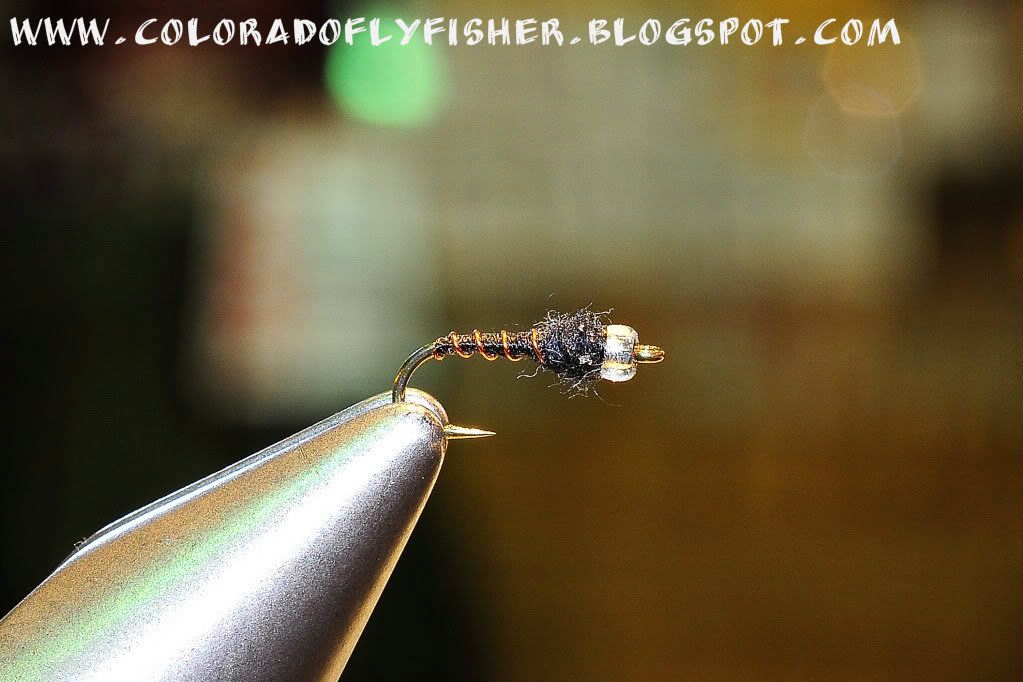 |
| #3 Mercury Black Beauty |
Number three on my list of killer trout flies for Colorado is the Mercury Black Beauty. It was created by Colorado tyer Pat Dorsey, and again, it has the omnipresent glass bead that Pat likes to put on many of his fly patterns. The Black Beauty isn't very impressive looking, but it's an extremely effective midge pattern, and is important to Colorado and many rivers throughout the country because there are so many different varieties of midges. Midges hatch year around, and because these insects are always available, there's never a bad time to fish a Black Beauty as a dropper. In fact, if you fished it as a dropper behind a red Copper John for an entire season, I would bet all ten cents in my wallet that you would have an extremely productive year of fishing.
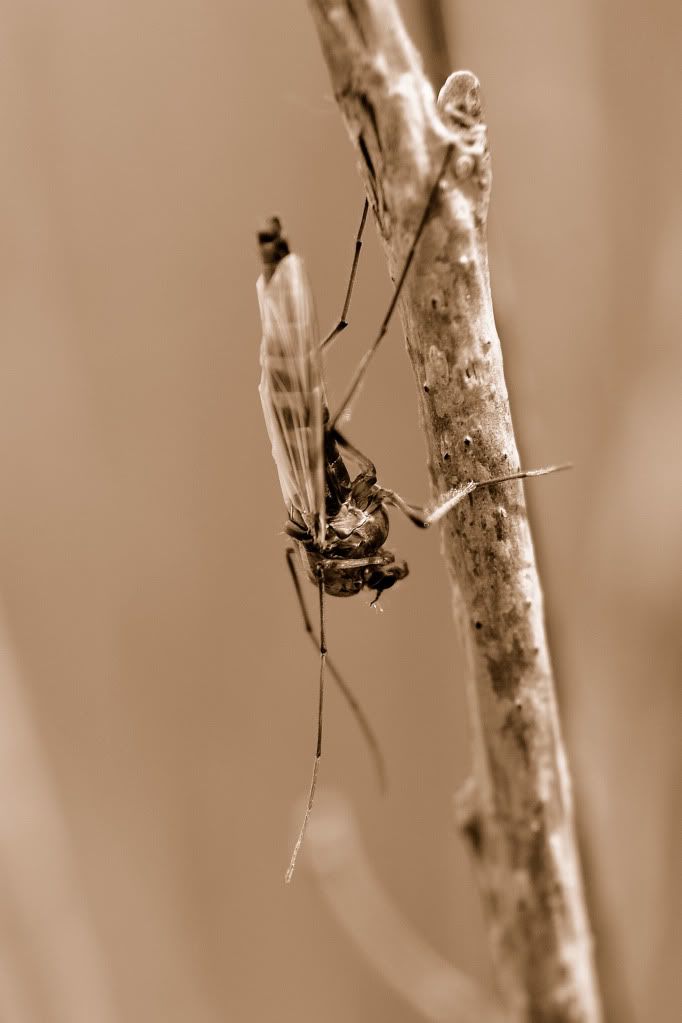 |
| Photo of an adult Chironomid Midge |
The Black Beauty is a great winter tailwater pattern. If you can't tell be looking at it, the Black Beauty doesn't weigh very much, so it would be best to trail it behind a heavier nymph, or put a little weight in front of it to help get down to fish when they are hugging the bottom. Sizes 20-26 are typically what I use which means that 5x and 6x leaders and tippet are a must just to be able to fit your line through the eye of most hooks. Starting from July through early October the Black Beauty also does a great job of imitating a spent trico.
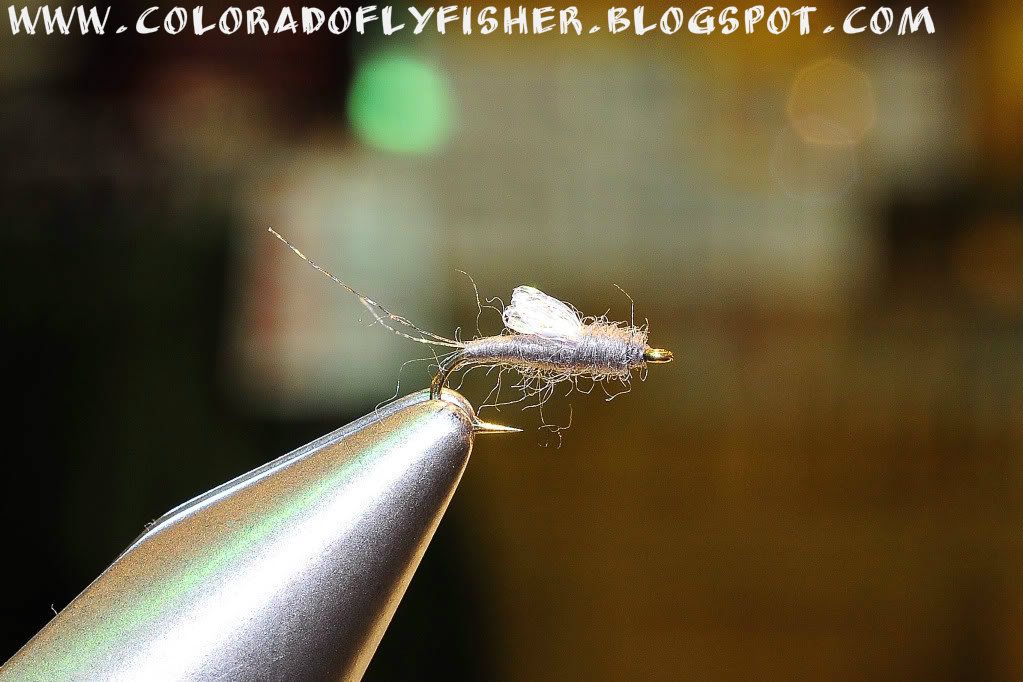 |
| #2 The RS-2 |
The RS-2 was created by Colorado tyer Rim Chung, and is another oldie but goodie that has spawned many variations on a theme. The name RS-2 stands for Rim Semblance number two. It is my understanding that he created it to imitate any kind of emerging insect, but it best imitates a blue winged olive mayfly emerger.
The above photo is of a variation of the RS-2 called a Sparkle Wing, named appropriately for the flashy material used for the wing, and is a redesign by another great Colorado tyer Charlie Craven. Of course, Pat Dorsey put his mark on this pattern by throwing a clear glass bead on it for good measure. The Mercury RS-2 is the perfect pattern to fish in faster pocket water during spring and late fall because of the extra flash given off by the bead. The Charlie Craven Sparkle Wing RS-2 is my favorite to fish in the surface film. I guide and fish with light dun colored RS-2's in sizes 22-24 during spring, and olive or black in the same sizes during fall.
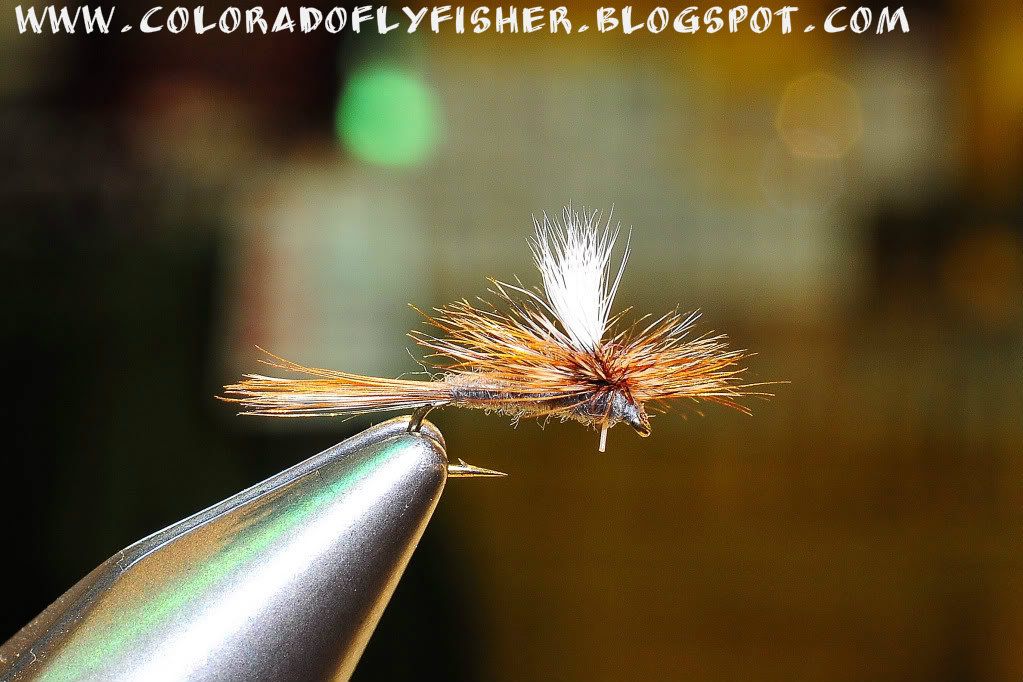 |
| #1 The Parachute Adams |
It didn't seem right not to have the most productive and iconic dry fly on the list. Out of all the dry flies I've fished, the Parachute Adams has landed more for me than all others. Beginning tyers, tying this pattern in smaller sizes will push you to become better. And the Adams will ultimately be one of your first goto flies when trout have their noses up.
The Parachute Adam's is consistent with the theme of generic patterns that never seem to stop catching fish; lasting through the ages. It's a very visible pattern with a parachute post made of white calf body hair. It floats great, and sits low in the film. Tied in larger sizes (sizes 14-18) this fly is fantastic for imitating adult Caddis, or Callibaetis in lakes and reservoirs. A size 22-26 Parachute Adams can be taken as an adult b.w.o. or a midge in rivers and small streams. During the colder months on any of the tailwaters we have here in Colorado, a size 26 Adams will consistently fool selective trout. If your target fish are being extra picky, an old guide trick that has worked wonders for me, is to clip off the tail. The clipped tail gives it a smaller profile that's closer to a midge, and it might surprise you how much of a difference little things like that can make.
Noticably missing from my list are the San Juan Worm, Prince Nymph, Pat's Rubber Leg, Stimilator, Wooly Bugger, and many other fly patterns that have become house hold names in the sport of flyfishing. Again, the flies on this list are just one experienced flyfishers take on what to carry in your box, forsaking all others, to give you the best chance to catch fish here in beautiful Colorado. All of the flies I just named that are not on my list are great flies, but I either haven't fished with them enough for lack of confidence, or caught enough fish with them to beat out what I chose.
Noticeably missing from my list are my own patterns. Even though I have an unlimited supply of confidence in my personal creations -many of which have landed more fish for me than the patterns on my top ten- it didn't feel right to put a bunch of patterns on the list that I haven't shared or submitted, and therefor, would be tough to find at a fly shop. At least for now...
So there you have it. Out of all the fly patterns you could throw to a rising fish, this new school fisherman and tyer with a taste for the old school, is telling you to tie on a Parachute Adams before anything else. If you carry a small box full of Parachute Adams in varying sizes you're well on your way to being that guy who everyone stops to ask what he's using. Thanks to everyone who has shown support for Colorado Fly Fishing Magazine! If you enjoy our site please subscribe to www.coloradoflyfisher.blogspot.com and like us on facebook!
For rates and availability for guided trips contact me at jonkleisflyfishing@yahoo.com
Tight lines!
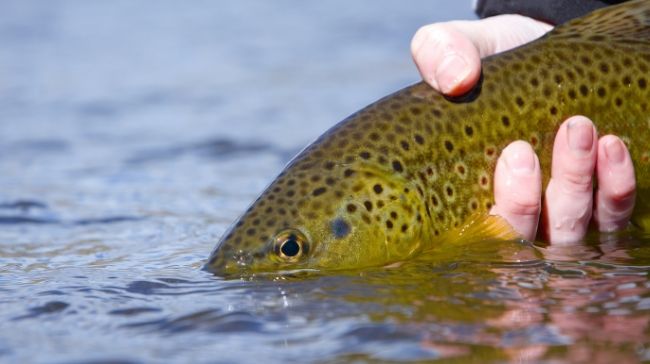
Great post! Bookmarked it for future reference. From my own experience in 11-mile canyon, I would also add the Trico spinner to the list of possibles. Thanks again!
ReplyDeleteThanks Matthew! You know what's funny about that is the Trico hatch in the canyon is by far my most favorite time of year. I actually gave it a lot of thought.
ReplyDeleteGenius! I think I need now to be more creative when it comes to fly fishing lures.
ReplyDeleteGreat post. Liked the detailed commentary and the pictures.
ReplyDelete